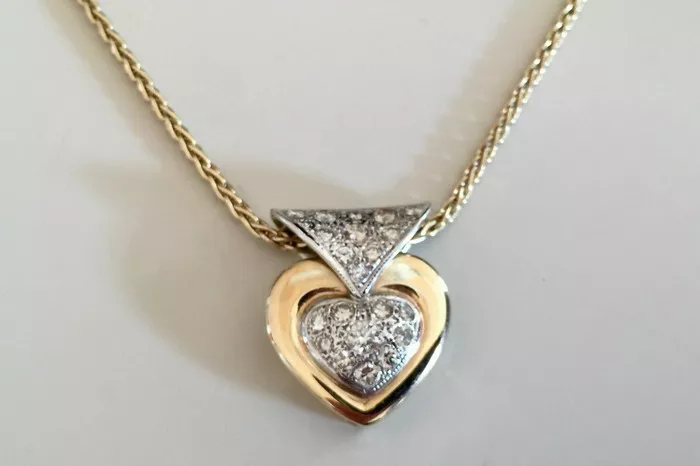When it comes to purchasing a diamond pendant, ensuring its authenticity is paramount. Whether it’s for a special occasion or a meaningful gift, the value and sentiment attached to a genuine diamond are undeniable. However, distinguishing between a real diamond and a convincing imitation can be challenging for the untrained eye. In this comprehensive guide, we will explore various methods to discern the authenticity of a diamond pendant, ranging from visual tests to professional verification. By familiarizing yourself with these techniques, you can make informed decisions and confidently invest in genuine diamond jewelry.
Visual Tests:
The Dot Test:
One of the initial visual tests to determine the authenticity of a diamond pendant is the dot test. This simple yet effective method involves placing the diamond pendant on a white surface with the flat side down. Genuine diamonds refract light differently from their synthetic counterparts. Therefore, if you observe a circular reflection or a dot within the gemstone, it is likely to be fake. Conversely, a real diamond will not produce this dot or reflection, as it exhibits superior light dispersion properties.
Water Test:
Another visual test involves assessing the density of the diamond by conducting a water test. Real diamonds are denser than most other gemstones and materials commonly used in imitations. To perform this test, gently drop the diamond pendant into a glass of water. A genuine diamond will sink to the bottom due to its high density. On the contrary, fake diamonds may float or remain suspended in the water due to their lower density. It’s important to note that this test should be done cautiously, ensuring that the diamond pendant is securely attached to prevent any damage.
Fog Test:
The fog test is a quick and simple method to gauge the thermal conductivity of a diamond. Authentic diamonds disperse heat rapidly, causing any fog or moisture breathed onto the surface to dissipate almost instantly. To conduct this test, hold the diamond pendant close to your mouth and breathe on it to create a layer of fog. Observe how quickly the fog dissipates. If it clears up immediately, it is likely a genuine diamond. Conversely, if the fog lingers or takes a longer time to disappear, the diamond may be fake or of lesser quality.
Professional Verification:
While visual tests provide valuable insights, they are not definitive indicators of a diamond’s authenticity. For accurate verification, it is advisable to seek the expertise of a professional, such as a certified gemologist or a reputable gemological laboratory. These professionals possess the knowledge, experience, and specialized equipment necessary to assess the authenticity and quality of diamonds accurately. Additionally, they can provide detailed certification and documentation, offering peace of mind regarding the diamond pendant’s legitimacy.
Setting and Mount Examination:
In addition to visual inspection of the diamond itself, examining the setting and mount of the pendant can also provide clues to its authenticity. Genuine diamonds are typically set in high-quality materials such as platinum, gold, or sterling silver. Inspect the setting for signs of craftsmanship and durability, as authentic diamonds are often accompanied by meticulous and secure settings. Conversely, imitation diamonds may be set in cheaper metals or flimsy settings that lack durability and craftsmanship.
Heat Test:
Although less commonly used, the heat test can provide additional insights into the authenticity of a diamond. Heating the diamond and observing its behavior can reveal certain characteristics indicative of its genuineness. Authentic diamonds are exceptionally resistant to heat and are unlikely to shatter or undergo significant changes when exposed to high temperatures. However, it’s important to exercise caution when performing this test, as excessive heat can damage the diamond or its setting. If unsure, it’s best to seek professional guidance to avoid any potential damage or misinterpretation of results.
In conclusion, determining the authenticity of a diamond pendant requires a combination of visual tests, professional verification, and careful examination of its setting and mount. While visual tests such as the dot test, water test, and fog test offer initial insights, they are not conclusive on their own. Seeking the expertise of a certified gemologist or utilizing professional equipment ensures accurate verification and provides reassurance regarding the diamond pendant’s authenticity. By employing these methods and exercising due diligence, you can confidently identify and invest in genuine diamond jewelry that will be cherished for years to come.

